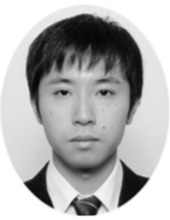Best Paper Award
NL-BMD: Nonlinear Block Multi-Diagonalization Precoding for High SHF Wide-Band Massive MIMO in 5G
Hiroshi NISHIMOTO, Akinori TAIRA, Hiroki IURA, Shigeru UCHIDA, Akihiro OKAZAKI, Atsushi OKAMURA
[Trans. Commun., Vol.E100-B, No.8 August 2017]

Hiroshi NISHIMOTO
Akinori TAIRA
Hiroki IURA
Shigeru UCHIDA
Akihiro OKAZAKI
Atsushi OKAMURA
The fifth generation mobile communications (5G) system is expected to accommodate the forthcoming huge traffic demands. In 5G, the use of high super high frequency (SHF) and extremely high frequency (EHF) bands is highly probable because of their potential for broader bandwidth. Massive multiple-input multiple-output (MIMO) technology utilizing hundreds of antenna elements must be a key antenna configuration in 5G to provide dramatic antenna beam gain and spatial multiplexing capability, and its benefit is of significance especially in high SHF/EHF bands to overcome severe propagation loss. Since antenna elements are controlled so as to form and direct beams to users, even in high SHF/EHF bands we can realize multiuser MIMO (MU-MIMO), where a base station (BS) simultaneously makes co-channel communications with multiple users. As a feasible configuration of massive MIMO at BS, analog-digital hybrid configuration, which is realized by combining analog beamforming and digital MIMO signal processing, is promising. It can reduce the size, power consumption and complexity of radio-frequency (RF) circuits while reasonably maintaining a performance which is still close to a fully-digital configuration.
In the MU-MIMO downlink, we require digital precoding at BS to eliminate inter-user interference (IUI) observed at each user. Approaches of digital precoding can be roughly classified into linear precoding (LP) and nonlinear precoding (NLP) types. The former achieves IUI reduction by linear spatial null steering to users except for the desired user. While it provides good performance when users are spatially separated, its performance may deteriorate considerably in ill-conditioned or spatially-correlated channels, i.e. when users are in proximity. On the other hand, the latter employs nonlinear operation composed of transmit IUI pre-cancellation (IUI-PC) and nonlinear signal shaping. It brings robust and high system throughput regardless of the given spatial channel condition whereas we have to solve the critical issue of high complexity for IUI-PC in the conventional NLP.
Addressing the issues above, in this paper the authors have proposed nonlinear block multi-diagonalization (NL-BMD) precoding, exploiting the advantage of massive MIMO which can form sharp beams. The proposed NL-BMD is composed of two major parts: BMD for linear partial spatial filtering, and an adjacent IUI-PC for nonlinear operation. The BMD filtering is computed to direct a strong beam to the desired user by partially allowing the IUI to adjacent users after clustering both the desired and adjacent users. The adjacent users will be corrupted by the allowed IUI if applying BMD only. Therefore, we then remove the IUI in the adjacent IUI-PC part. IUI-PC works on the same principle as acoustic noise cancellation techniques. It performs subtractive cancellation of interfering signals in advance of the linear spatial filtering. By concomitantly using with BMD, we can limit IUI signals to be pre-canceled to adjacent users only, resulting in the numerical complexity in IUI-PC being reduced to 1/4 of the conventional NLP. Consequently, the proposed NL-BMD precoding enables high system throughput even in dense scenarios, where directed beams may be overlapped, with reduced complexity.












